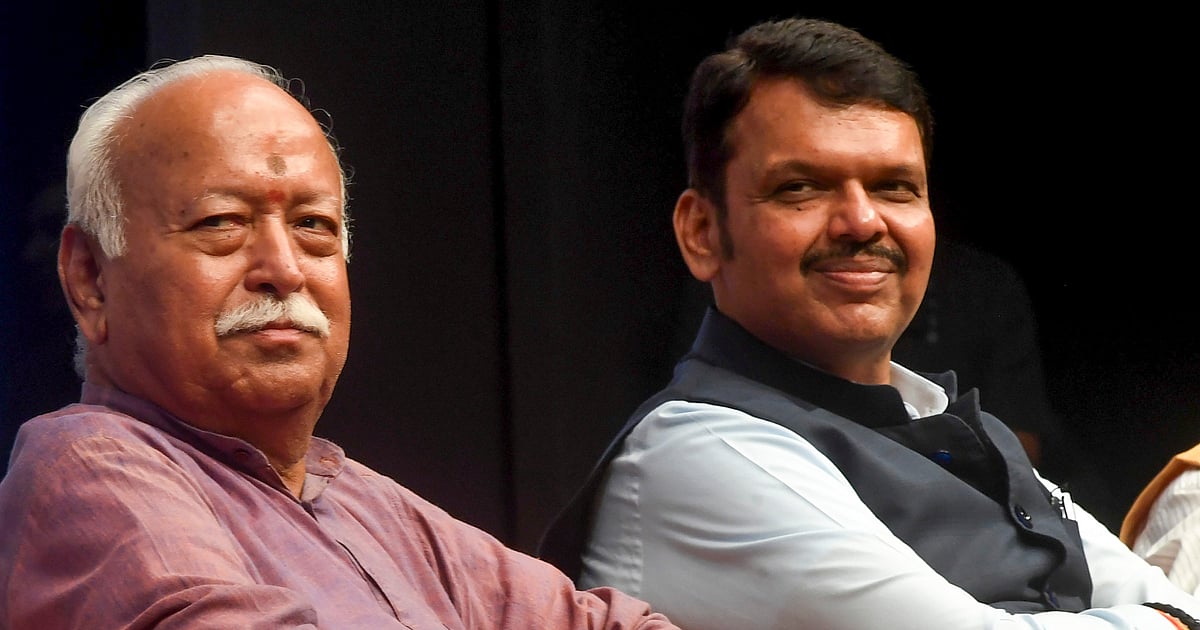 |
|
The recent assembly elections in Maharashtra and Jharkhand have yielded contrasting results, painting a complex picture of the Indian political landscape. In Maharashtra, the BJP-led Mahayuti alliance secured a resounding victory, winning a staggering 230 out of 288 seats. This decisive win solidifies the BJP's dominance in the state and effectively ends the Congress-led Maha Vikas Aghadi's hopes of forming the government. The Congress-led coalition managed to secure only 46 seats, a significant setback for their efforts to challenge the BJP's stronghold. The scale of the BJP's victory reflects a strong public mandate and raises the question of who will lead the state's next government. The Rashtriya Swayamsevak Sangh (RSS), the ideological parent of the BJP, has explicitly stated its preference for a BJP chief minister, underscoring the organization's influence in the party's decision-making process. This declaration sets the stage for intense internal negotiations within the BJP to determine the most suitable candidate for the top post. The selection process will likely involve careful consideration of various factors, including the candidate's experience, popularity, and ability to unite diverse factions within the party. Given the BJP's substantial majority, the selection process, while potentially complex, is unlikely to face significant opposition.
In stark contrast to the BJP's triumph in Maharashtra, the Jharkhand assembly elections witnessed a remarkable comeback for Hemant Soren’s JMM-led alliance. Against the backdrop of a strong campaign by the BJP-led NDA, the JMM-led coalition managed to secure a second consecutive term, winning 56 out of 81 seats. This unexpected victory demonstrates the resilience of the JMM alliance and reflects the complex interplay of local factors and political dynamics that influence electoral outcomes in specific regions. The BJP's performance in Jharkhand, where they secured only 24 seats, represents a substantial setback for their national ambitions. The win of the JMM highlights the challenges posed by regional parties and the intricacies of managing a diverse coalition of political forces, underscoring the fact that electoral success is not guaranteed even for the seemingly powerful players. The JMM's win in Jharkhand is not just a testament to its popularity but also a reflection of the specific challenges and opportunities within that political environment.
The contrasting results in Maharashtra and Jharkhand showcase the diverse nature of Indian politics and the unpredictable dynamics that shape electoral outcomes. While the BJP's landslide victory in Maharashtra consolidates their position in the state, the JMM's second consecutive victory in Jharkhand underscores the ongoing relevance of regional parties and the complex political realities that vary significantly across different states. The RSS's clear preference for a BJP chief minister in Maharashtra highlights the intricate relationship between the BJP and its ideological parent organization, emphasizing the RSS's continued influence on the party's leadership selection and policy directions. Furthermore, these elections also demonstrate the fluctuating nature of public opinion and the need for political parties to adapt to the evolving political and socio-economic landscape to maintain their support base. The next few months will be crucial in understanding the long-term implications of these elections, particularly in Maharashtra where the BJP will have to navigate the internal dynamics of selecting a suitable chief minister while maintaining its support base.
The political landscape of India is constantly shifting, shaped by a variety of complex factors, including caste and religious dynamics, socio-economic factors, and the strategic alliances formed among parties. Analyzing the outcomes of elections like those in Maharashtra and Jharkhand allows for a deeper understanding of these factors. Future elections will undoubtedly be influenced by the lessons learned from these results. The winning strategies and the factors that contributed to the success and failures of different parties will be carefully studied by strategists across the political spectrum. The future of Indian politics remains dynamic and open to the constant evolution of the electorate and their evolving priorities.
The differences in the outcomes of the two state elections highlight the importance of understanding the diverse and unique circumstances prevailing within each state. The ability to connect with the local populace, addressing their specific needs and aspirations, is often a key factor in determining electoral success. This highlights the necessity for political parties to adopt a nuanced and tailored approach rather than relying on a one-size-fits-all strategy across the country. Looking ahead, the ability of the winning parties to govern effectively and address the challenges facing the citizens will be crucial in shaping the public's perception of their leadership and determining their future electoral prospects. The political scene in India is constantly evolving, and maintaining public support requires continuous adaptation and responsiveness to the ever-changing needs of the population.
